Cards In This Set
| Front | Back |
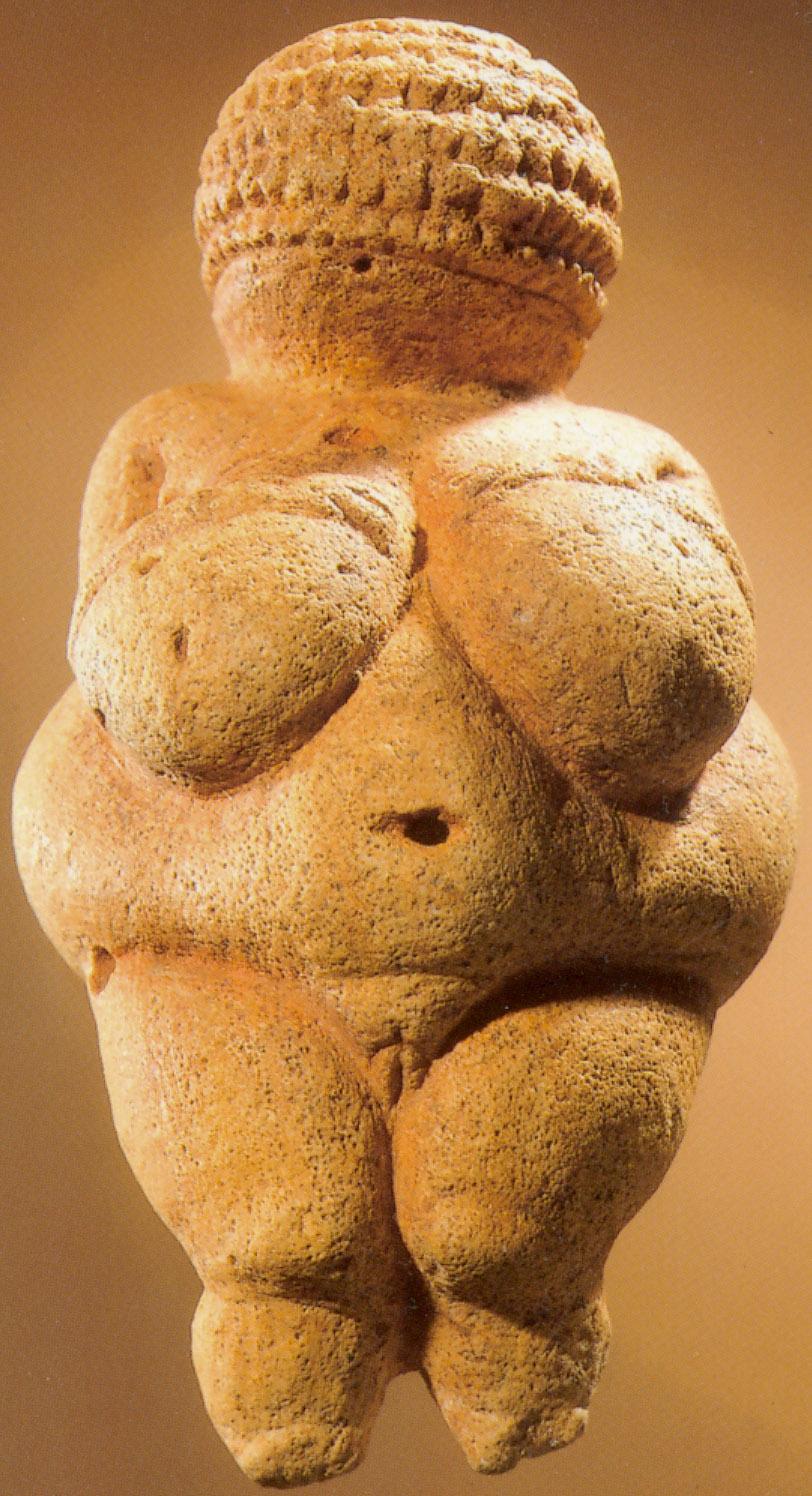 Woman of Villendorf |
Woman of Villendorf
28,000 BCE Villendorf Austria Paleolithic Focuses on fertility, and how important it was for the times. Represents moving forward, survival of the group, and the danger involved in child birth. Face is not shown, archaeologists have guessed that it is anything between a head of curly hair to a woven hat. Hands, Face, Feet are of no particular interest. Possibly a talisman to induce/protect through pregnancy, also possible a goddess. Is one of the earliest sculptures found. One of many sculptures its size, but the most identifiable as a figure (most look like piles of rock). Covered in a reddish colored powder, used today in some rituals. |
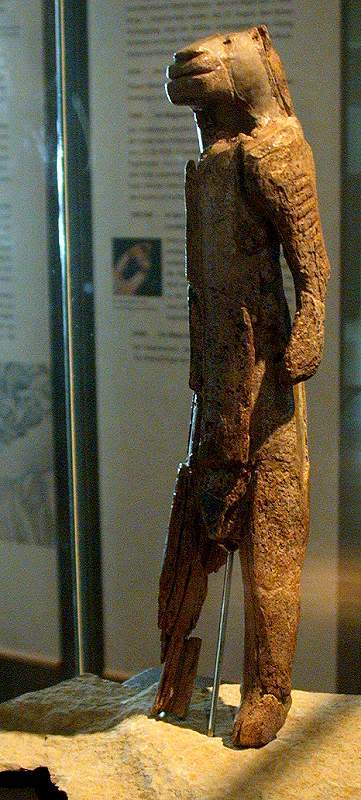 Human with a feline Head |
Human with feline Head, Germany 28,000 BCE from Hohlenstein-Stadel, germany.
Paleolithic Mammoth ivory, 11 5/8" high. Ulmer Museum, Ulm. Because all we have are the objects, we view this as a human standing with a mask. It was important enough that they used ivory and took it from the animal, wore it down, and shaped it in a time where the energy to do so would have been tremendous. |
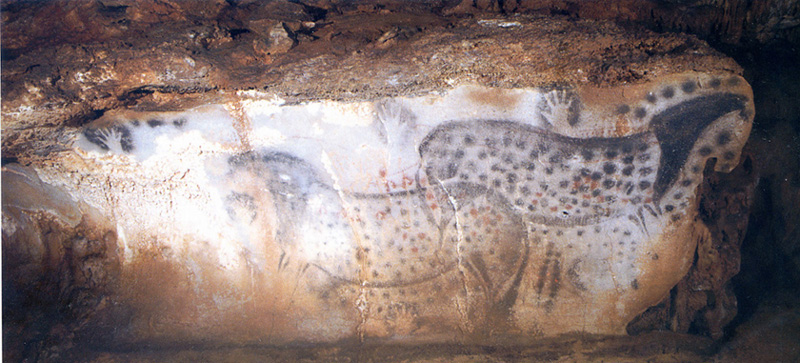 Spotted Horses and Hands |
Spotted Horses & Hands
22,000 BCEfrom Pech-Merle, France. Paleolithic 11'2" long, wall paintings in a cave. Some of the earliest of the cave paintings. Same techniques as the Bison from Alta Mira. Handprints are small, might be handprints of children. One of the few cases of human involvement in the cave paintings, which were primarily of animals. Paintings are usually in the far back of the caves, while the people lived in the front of the cave. |
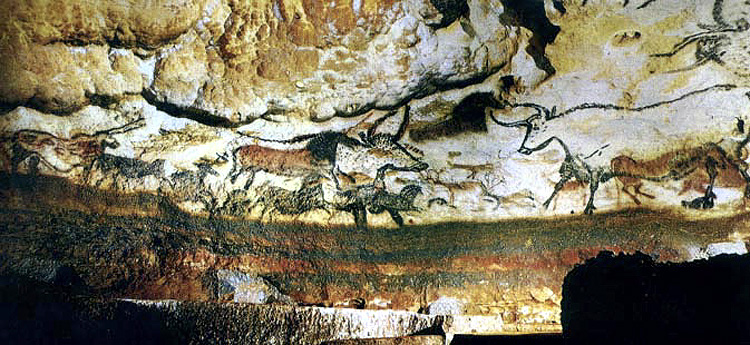 Hall of Bulls |
Hall of Bulls, Lascaux Cave
13,000 BCEDordogne, France Paleolithic Largest bull is 11'6" long. Has some of the widest range of animals. Bison, small horses, deer. All of them are on the sam ehorizon line, and in motion. There is overlapping in the outlines. Facing directions as if they are charging each other. Very detailed. Life size animals, high off the ground. |
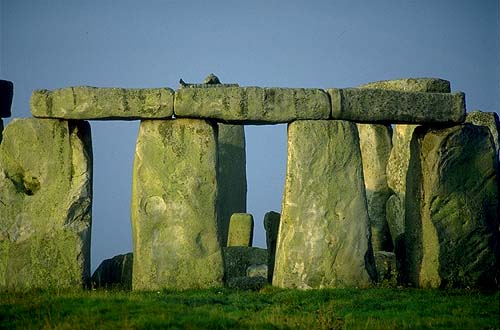 Stonehenge |
Stonehenge,
2,550-1,600 BCE Salisburg Plain, England Neolithic Most famous megalith in England. A henge is an arrangement of megalithic stones in a circle, often surrounded by a ditch. Used the post-and-lintel method to lock the stones in to place. Inside is a ring of bluestones, which encircle a horseshoe of trilithons (threee stone constructions) five lintel topped pairs of the largest sarsens (a form of sandstone.) Could have been an altar, a solar calendar. |
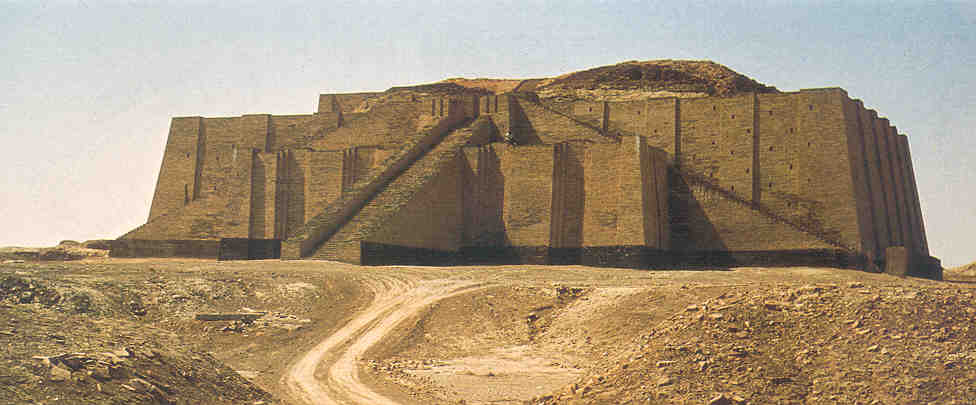 Nanna Ziggurat at Ur, Iraq |
Nanna Ziggurat
3200-3000 BCE Ur, Iraq Sumerian Using only mud bricks, the Sumerians erected temple platforms called ziggurats several centuries before the Egyptians built stone pyramids. The most famous ziggurat was the biblical Tower of Babel. Was probably dedicated to Anu, the Sky God |
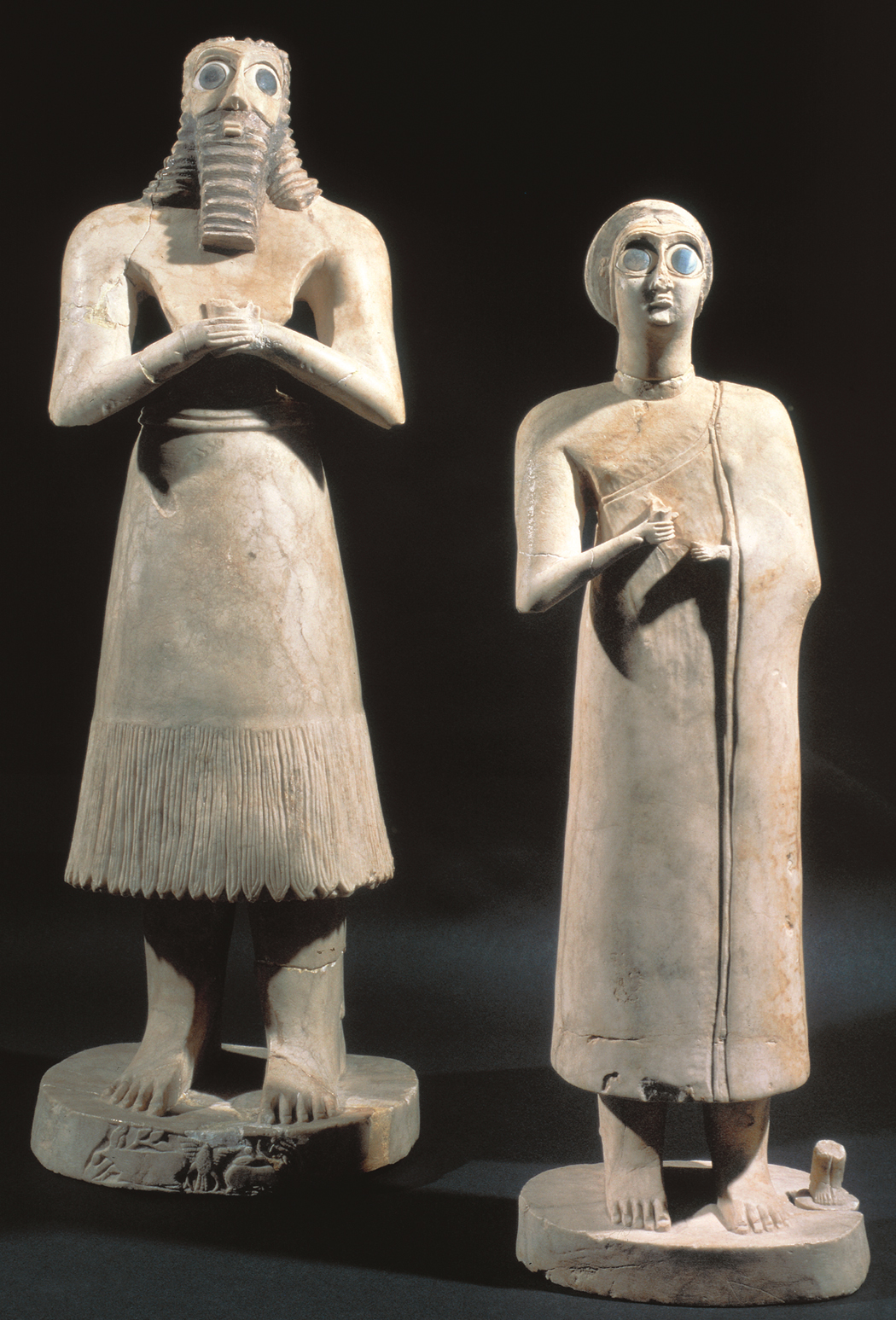 Votive Statues from Eshnunna |
Votive Statues from Eshnunna
2700 BCE Eshnunna, Iraq Sumerian The oversized eyes probably symbolized the perpetual wakefulness of these substitute worshipers offering prayers to the deity. The breakers the figures hold were used to pour libations in honor of the gods. |
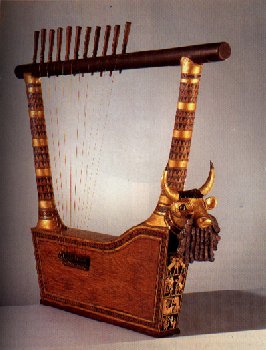 Bull's Head Lyre |
Bull's Head Lyre
2,600 BCE Ur, Iraq Sumerian Has two major power symbols. The beard (male power symbol) and the bull which represent some kind of power. Earliest example we have of musical instruments. |
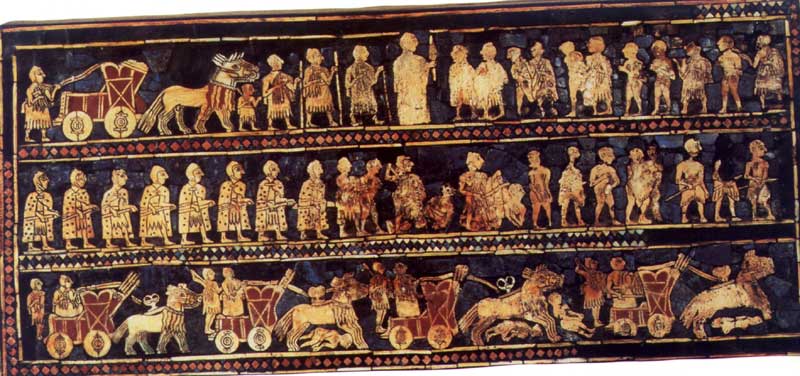 Standard Ur |
Standard of Ur
2,600 BCE Ur, Iraq Sumerian Probably carried on a pole, for battle or political meetings. Tells a story from the bottom up. Lapis Lazuli would have had to been imported from a mine in Afghanistan/Egypt. It shows they had to have trade. Exmples Heirachal scale, because the king was so large, it makes it very clear that the king is the most important and the slave (tiniestperson) is not. |
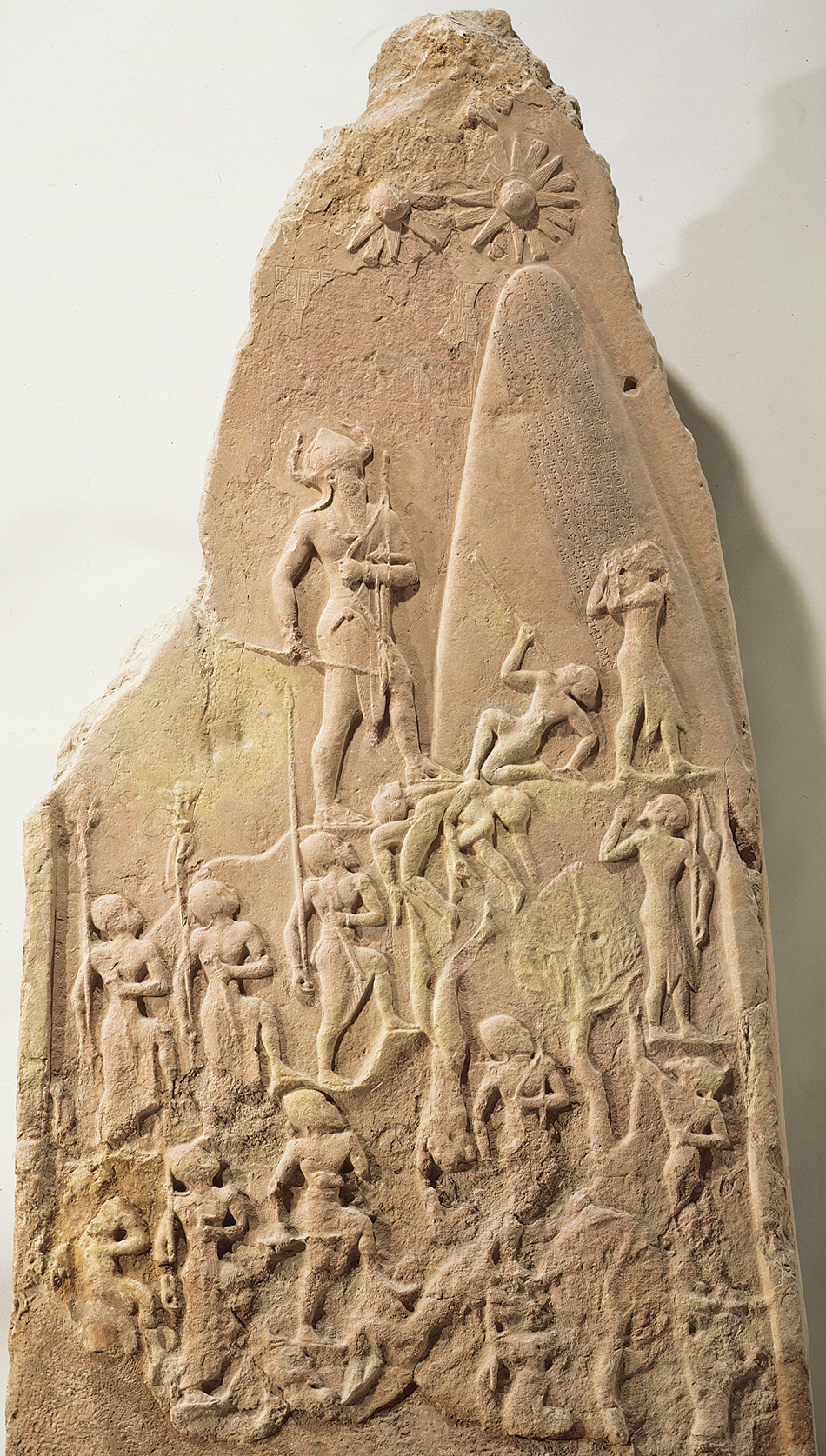 Victory Stele of Naram Sin |
Victory Stele of Naram Sin
2,200 BCE Found in Susa, Iran Akkadian Found not in akkadia, but in Susa. Rediculously big at 6'7", first example of the glorification of a military hero. Stele existed in the region as road markers, as warning. It was inscribed. Figures are all in profile, tells the story of Narm-sim rising to glory, enemies falling before him. |
 Stele of Hammuarabi |
Stele of Hammuarabi
1,780 BCE Susa, Iran Babylonian First example of the written law. Carved in to rock. Combination of an image and text. Written in quniform. Details of what the people had to do for the king and what the king had to do for the people. The image is of the king talking to god (god is seated). Indicated that the laws were handed down to the king from the great god. The power of law is celestial. |
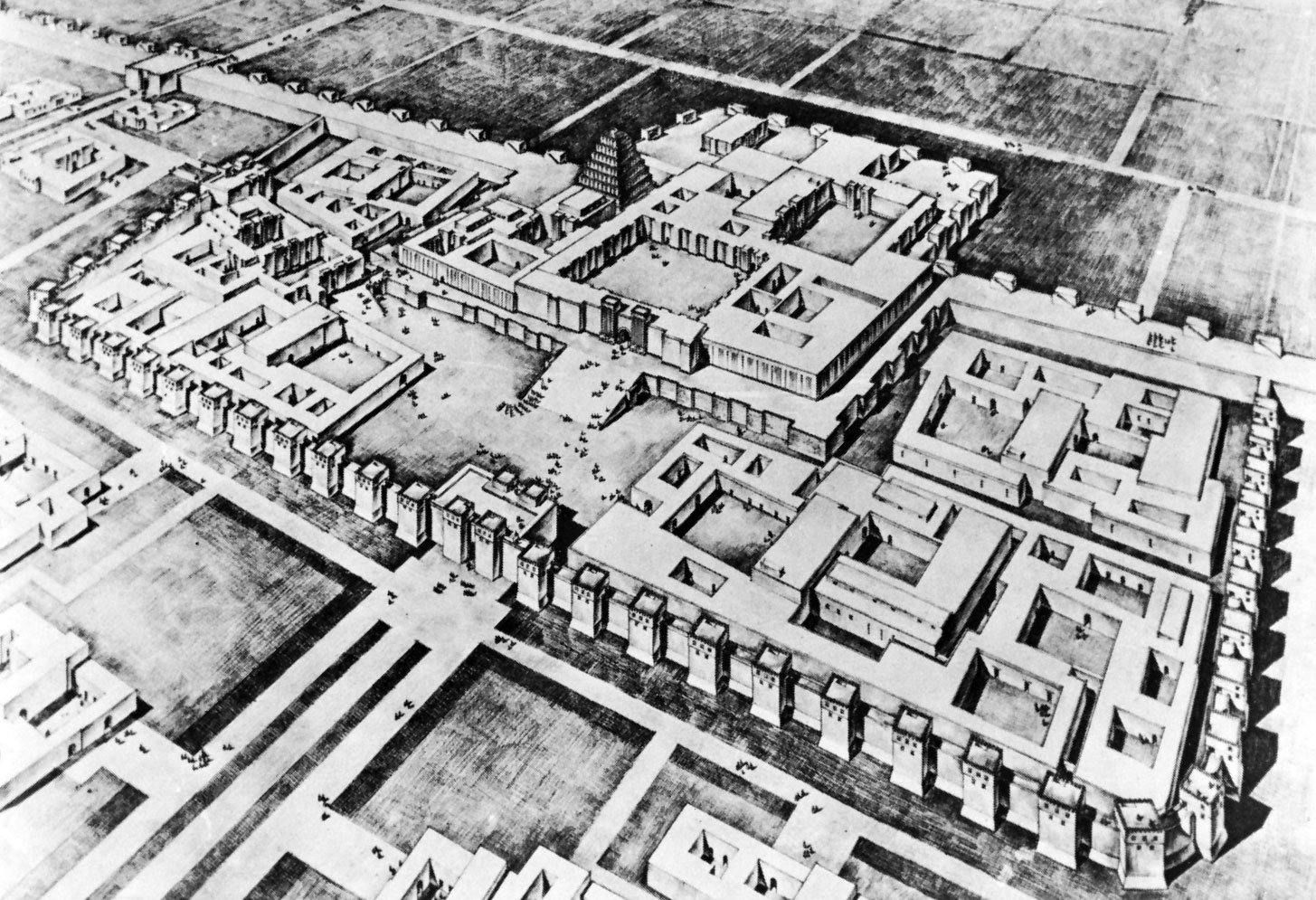 Reconstruction- Palace of Sargon II |
Reconstruction - Palace of Sargon II
720 BCE Dur Sharrukin, Iraq Assyrian Never was finished. Stone walls, the most important thing is that it is surrounded by a protective wall (dates back to Jericho), Developed the Vaulted arch. Incredibly important in terms of architecture. No longer was it the post-lintel. Two different types of arches (corbelled arch) allows for the space to be opened up and make it higher. Develeoped the True Arch. Built up with a series of trapezoidal shapes called Vous' ars. Laid in dry and then at the top a stone is dropped that wedges them all in to palce. That stone is called the Key Stone. |
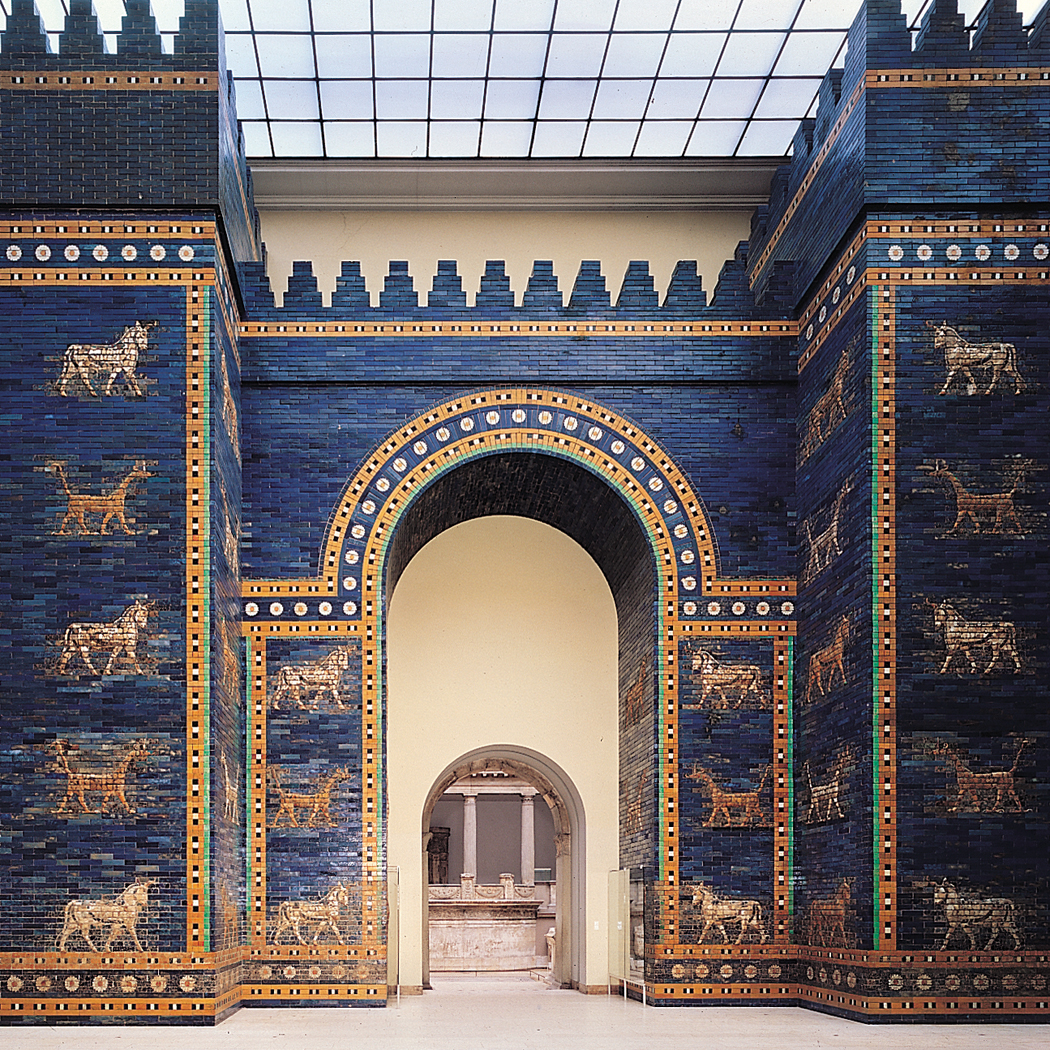 Ishtar Gate |
Ishtar Gate, Babylon
575 BCE Babylon, Iraq Neo-Babylonian A double gate that was the eighth gate to the inner city of Babylon, dedicated to the goddess Ishtar. Statues of the deities were paraded through the gate and down the Processional Way each year during the New Year's celebration. Ceremonial, was inscribed by the king. |
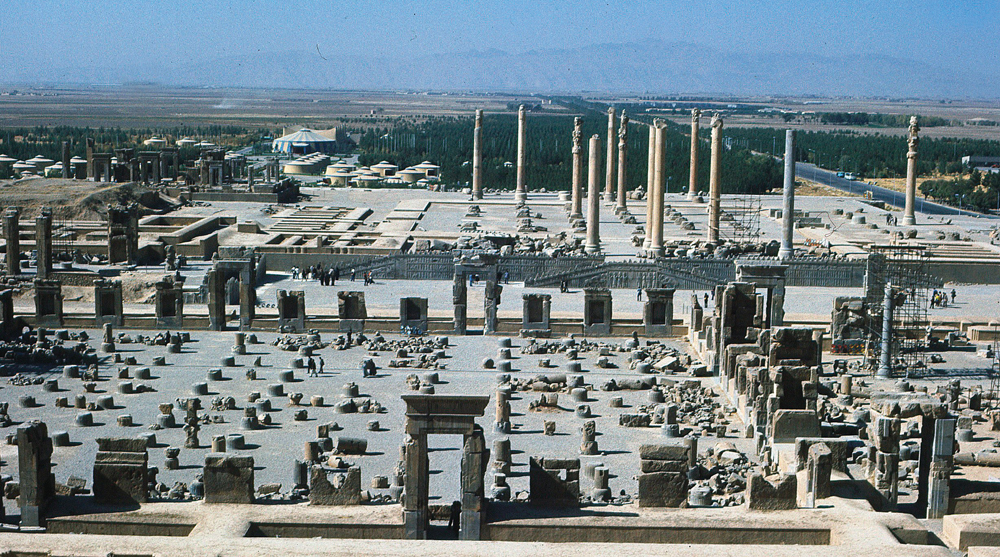 Persepolis |
Perseplis
500 BCE Iran Persian Led in to by the Gate of all Nations, depicted members of various foreign delegations paying tribute to Darius I, was the focal point of Persepolis, the ceremonial capital. People were in profile. |
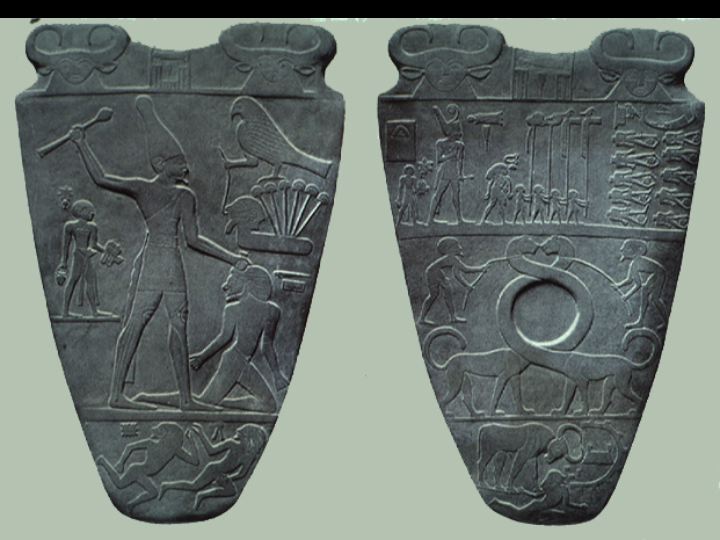 Pallete of King Narmer |
Pallete of King Narmer
3,000 BCE Hierakonpolis, Egypt Pre Dynastic Egypt |



